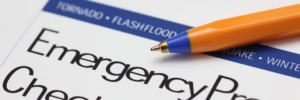New Year, New Safety Goals: Setting Effective Safety Resolutions for Construction Teams
As we welcome the new year, it’s an excellent time for construction teams to set fresh safety goals and strengthen their commitment to workplace safety. The start of the year is an ideal moment to evaluate past safety practices and set new, robust standards to ensure a safer and more productive year ahead. Here are practical tips for setting effective safety resolutions for your construction team.
Review and Reflect Start by reviewing the past year’s safety records. Identify any recurring issues, near misses, or common hazards that occurred. Discuss these findings in team meetings to gather input and perspectives on why these issues might be happening and how they can be prevented in the future.
Set Specific Safety Goals Goals should be specific, measurable, achievable, relevant, and time-bound (SMART). For example, reducing the number of falls on-site by 20% by the end of the year through enhanced training and better safety equipment. Specific goals give your team clear targets to aim for.
Enhance Safety Training Education is crucial in construction safety. Plan regular training sessions to cover both basic safety protocols and specific procedures for new equipment or materials. Consider bringing in external experts for specialized training and updates on the latest safety regulations.
Invest in Technology Modern safety technologies, such as wearable devices that monitor vitals or apps that track hazard reporting, can significantly enhance safety management. Evaluate which technologies could be integrated into your safety practices to improve incident reporting and response times.
Commit to Regular Safety Audits Regular safety audits help identify potential hazards before they lead to accidents. Schedule monthly or quarterly audits and adjust your safety strategies based on the findings. This proactive approach can dramatically decrease the likelihood of injuries.
Foster a Safety Culture Encourage a culture where safety is everyone’s priority. Recognition programs for safe behavior and open communication channels about safety concerns can empower employees to participate actively in safety initiatives. The more engaged the team, the more effective your safety strategies will be.
Prepare for Emergency Response Ensure that all team members are trained on emergency procedures. Regular drills for potential scenarios like fires, falls, or equipment failures make sure everyone knows how to act swiftly and effectively in an actual emergency.
Setting these goals not only improves safety but also enhances overall team performance. Safety and productivity go hand-in-hand, with fewer accidents translating into less downtime and a more focused workforce.
Start the Year with Enhanced Safety Standards
At Construction Safety Experts, we are poised to help you achieve your safety resolutions for the new year. With expert guidance, advanced training modules, and cutting-edge PPE solutions, we are ready to assist you in elevating your construction site’s safety standards. Call (919) 463-0669 today to ensure your team is well-prepared and equipped for the year ahead.
Looking for more insights on setting impactful safety goals? Contact Construction Safety Experts. We’re here to provide you with the expertise needed to make your safety protocols effective and comprehensive.





